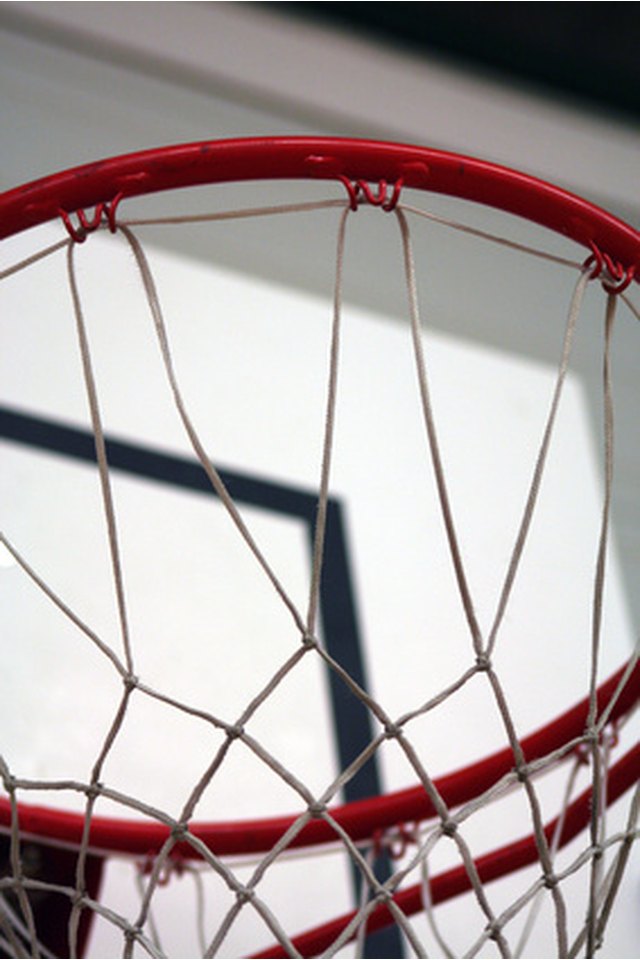Basketball Backboard Rules

In basketball, the backboard is used to stop the ball from going out of bounds on a shot as well as an aid for guiding the ball into the basket when shooting from close range. Since the backboard is such an important part of the game of basketball, there are certain rules governing its dimensions and the proper use during the game.
Size and Regulations
A regulation basketball backboard measures 72 inches wide by 42 inches tall and stands out from the baseline so that the center of the rim is 63 inches from the out-of-bounds line. An outline of a rectangle is painted on the front of the backboard to aid players in banking the ball off the backboard for a field goal. This rectangle measures 24 inches wide by 18 inches high, and is placed 6 inches from the bottom edge of the backboard in the middle. Regulations call for padding to be placed on the sides and bottom of the backboard in order to prevent injuries to players.
Out of Bounds
The top, sides and bottom of the backboard are all considered inbounds, according to the National Collegiate Athletic Association. A ball that strikes any of these parts of the backboard is considered to be inbounds, unless it strikes the backboard and then falls out of bounds without being touched. A ball that passes over the top of the backboard is automatically considered to be out of bounds, even though it has not yet touched the floor out of bounds. Any supports connected to the backboard are considered to be out of bounds as well.
Other Backboard Rules
Immediately upon touching the backboard, the ball is considered to be on its downward flight, and is thus subject to the rules of goaltending. If an offensive player touches the ball after it has touched the backboard and is above the rim, the referee shall blow the whistle and award the ball to the opposing team. If a defensive player touches the ball in this situation, the ball is dead and the offensive team is awarded an automatic field goal, even if the try was unsuccessful. If a ball gets lodged between the backboard and the rim during play, it is considered a jump ball, unless the ball was lodged as a result of a throw in, and no other players touched the ball after it was thrown in. In this case, it is considered a throw-in violation, and the opposing team is awarded the ball out of bounds at the spot of the original throw-in.
References
- National Collegiate Athletic Association: Basketball Rules
- "Basketball Rules Book"; National Federation of State High School Associations; 2009
- National Basketball Association: Rules
Writer Bio
James Patterson specializes in health and wellness topics, having written and produced material for the National Institutes of Health, the President's Cancer Panel and an Inc. 500 Hall of Fame company. He is also a former sportswriter with writing experience in basketball, baseball, softball, golf and other popular sports.
